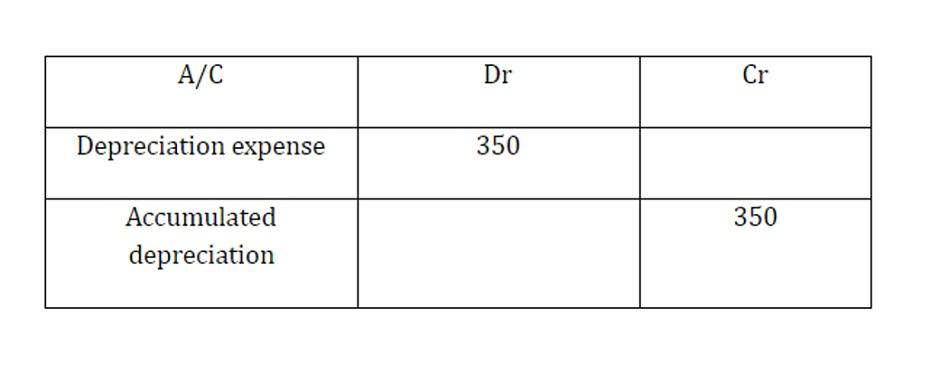
It shows a business has consistently generated profits and retained a good portion of those earnings. It also indicates that a company has more funds to reinvest back into the future growth of the business. These programs are designed to assist small businesses with creating financial statements, including retained earnings. A statement of retained earnings a credit balance in retained earnings indicates that details the changes in a company’s retained earnings balance over a specific period, usually a year. Positive retained earnings signify financial stability and the ability to reinvest in the company’s growth. This usually gives companies more options to fund expansions and other initiatives without relying on high-interest loans or other debt.
Example Retained Earnings Calculations
To get a better understanding of what retained earnings can tell you, the following options broadly cover all possible uses that a company can make of its surplus money. For instance, the first option leads to the earnings money going out of the books and accounts of the business forever because dividend payments are irreversible. Retained earnings are the cumulative net earnings or profits of a company after accounting for dividend payments. As an important concept in accounting, the word “retained” captures the fact that because those earnings were not paid out to shareholders as dividends, they were instead retained by the company.
How to Calculate the Effect of a Stock Dividend on Retained Earnings?
However, note that the above calculation is indicative of the value created with respect to the use of retained earnings only, and it does not indicate the overall value created by the company. Management and shareholders may want the company to retain earnings for several different reasons. Being better informed about the market and the company’s business, the management may have a high-growth project in view, which they may perceive as a candidate for generating substantial returns in the future. For this reason, retained earnings decrease when a company either loses money or pays dividends and increase when new profits are created. The disadvantage of retained earnings is that the retained earnings figure alone doesn’t provide any material information about the company.
Example Calculation
- The disadvantage of retained earnings is that the retained earnings figure alone doesn’t provide any material information about the company.
- Revenue sits at the top of the income statement and is often referred to as the top-line number when describing a company’s financial performance.
- Businesses use this equity to fund expensive asset purchases, add a product line, or buy a competitor.
- At the end of the period, you can calculate your final Retained Earnings balance for the balance sheet by taking the beginning period, adding any net income or net loss, and subtracting any dividends.
- Let’s walk through an example of calculating Coca-Cola’s real 2022 retained earnings balance by using the figures in their actual financial statements.
Retained earnings are also called earnings surplus and represent reserve money, which is available to company management for reinvesting back into the business. When expressed as a percentage of total earnings, it is also called the retention ratio and is equal to (1 – the dividend payout ratio). You can either distribute surplus income as dividends or reinvest the same as retained earnings. Net Income is the profit your company made during the current period after all expenses have been deducted from revenues.
- Businesses that generate retained earnings over time are more valuable and have greater financial flexibility.
- Retained earnings refer to the residual net income or profit after tax which is not distributed as dividends to the shareholders but is reinvested in the business.
- If a business sold all of its assets and used the cash to pay all liabilities, the leftover cash would equal the equity balance.
- However, the amount of the retained earnings balance could be relatively low even for a financially healthy company, since dividends are paid out from this account.
- The Retained Earnings account can be negative due to large, cumulative net losses.
- Accordingly, each shareholder has additional shares after the stock dividends are declared, but his stake remains the same.
A company indicates a deficit by listing retained earnings with a negative amount in the stockholders’ equity section of the balance sheet. The firm need not change the title of the general ledger account even though it contains a debit balance. The most common credits and debits made to Retained Earnings are for income (or losses) and dividends. The main difference between retained earnings and profits is that retained earnings subtract dividend payments from a company’s profit, whereas profits do not.
Shareholder Equity Impact

In this article, you will learn about retained earnings, the retained earnings formula and calculation, how retained earnings can be used, and the limitations of retained earnings. If every transaction you post keeps the formula balanced, you can generate an accurate balance sheet. For instance, tech startups often reinvest heavily to fuel growth, whereas mature utility companies might pay more dividends. Shareholders, analysts and potential investors use the statement to assess a company’s profitability and dividend payout potential.
How Net Income Impacts Retained Earnings

This is because retained earnings provide a more comprehensive overview of the company’s financial stability and long-term growth potential. Learn how to find and calculate retained earnings using a company’s financial statements. It can reinvest this money into the business for expansion, operating expenses, research and development, acquisitions, launching new products, and more. The specific use of retained earnings depends on the company’s financial goals. Ultimately, the company’s management and board of directors decides how to use retained earnings.
Like paid-in capital, retained earnings is a source of assets received by a corporation. Paid-in capital is the actual investment by the stockholders; retained earnings is the investment by the stockholders through earnings not yet withdrawn. A company’s shareholder equity is calculated by subtracting total liabilities from its total assets. Shareholder equity represents the amount left over for shareholders if a company pays off all of its liabilities. To see how retained earnings impact shareholders’ equity, let’s look at an example. Retained Earnings (RE) are the accumulated portion of a business’s profits that are not distributed as dividends to shareholders but instead are reserved for reinvestment back into the business.

Retained earnings offer valuable insights into a company’s financial health and future prospects. When a business earns a surplus income, it can either distribute the surplus as dividends to shareholders or reinvest the balance as retained earnings. It reconciles the beginning balance of net income or loss for the period, subtracts dividends paid to shareholders and provides the ending balance of retained earnings. This is the net profit or net loss figure of the current accounting period, for which retained earnings amount is to be calculated.

We can find the dividends paid to shareholders in the financing section of the company’s statement of cash flows. Let’s walk through an example of calculating Coca-Cola’s real 2022 retained earnings balance by using the figures in their actual financial statements. You can find these figures on Coca-Cola’s 10-K annual report listed on the sec.gov website. If a company decides not to pay dividends, and instead keeps all of its profits for internal use, then the retained earnings balance increases by the full amount of net income, also called net profit.


